PRESERVING A MILITARY LEGACY FOR FUTURE GENERATIONS
The following Reflections represents EM2 Floyd Farrar’s legacy of his military service from 1957 to 1962. If you are a Veteran, consider preserving a record of your own military service, including your memories and photographs, on Togetherweserved.com (TWS), the leading archive of living military history. The following Service Reflections is an easy-to-complete self-interview, located on your TWS Military Service Page, which enables you to remember key people and events from your military service and the impact they made on your life. Start recording your own Military Memories HERE.
Please describe who or what influenced your decision to join the Navy.

My father was a WW II Seabee Carpenter’s Mate 2nd. He was with the 38th Battalion during the invasion of Attu and Kiska in the Aleutian Islands during 1943-44. He then was sent to Camp Floyd B Parks in Pleasanton, Calif., where he learned machinery repair. He then was sent to build runways and hardstands for the 20th Air Force on Tinian Island in the Marinas. While there, he witnessed the “Enola Gay” load and take off for Hiroshima. Same with “Bock’s Car” deliver to Nagasaki. He was then mustered out at the end of the war.
He ran into an old Navy friend where we lived in So CA and joined reserves for weekend fun and drinking beer etc., MUCH to the chagrin of my mother. Then in June of 1950, he was called back up and went back in as a B.M./2nd cargo handler. He was on the invasion of Inchon in Korea aboard an APA. My uncle was a Gunner’s Mate 2nd on USS Frank E. Evans DD 745 and was on the evacuation of Wonsan Harbor. I had heard Navy stories ever since I was old enough to remember. And that was the biggest reason I enlisted in the U.S. Navy.
Whether you were in the service for several years or as a career, please describe the direction or path you took. What was your reason for leaving?
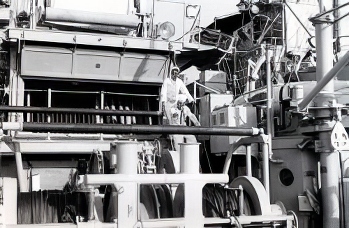
I served in the U.S. Naval reserves from April 1957 through September 1958. At first, I was stationed one weekend a month aboard a World War II diesel boat at Long Beach Naval Station, CA. It was the USS Sawfish SS 276. We learned that boat very well. At least twice or more during the summer months, a working boat came up from San Diego and let us crew the thing for a weekend operation off of Catalina. GREAT fun too! I wanted to be a radioman then BECAUSE I always saw them sitting down!
After high school, I decided to go to active duty U.S. Navy on September 5, 1958. Alas, the active-duty physical said I had bad eyesight, which prevented submarine duty. After getting new glasses, I opted for sixteen weeks at San Diego for “A” School. I was offered a choice of schools and chose a rate that I could use in civilian life for a job. I attended Electricians Mate Class ‘A’ School & 16mm Motion Picture Operator school @NTC, San Diego, from fall 1958 through late January 1959.
I transferred to the surface fleet on February 9, 1959, and was assigned to USS Inflict (MSO 456) at Pier 9, Long Beach, CA. In my Squadron 7, Division 71, we consisted of USS Fortify (flag), USS Engage, USS Loyalty, USS Impervious, and USS Inflict. I served the entire time on the same ship until my discharge on September 8, 1962. In truth, I wanted to party in Belmont Shore, CA, and chase skirts.
If you participated in any military operations, including combat, humanitarian and peacekeeping operations, please describe those which made a lasting impact on you and, if life-changing, in what way?

No combat operations, only peacetime stuff off the coast of California and one WESTPAC trip in May of 1960 through November of 1960. We did participate in the last airburst atomic bomb tests.
We went to Pearl Harbor in the summer of 1962 and anchored off Lahaina, Maui, with many instruments to test a LOT of things during the air burst A-bomb tests off Johnston Island.
Did you encounter any situation during your military service when you believed there was a possibility you might not survive? If so, please describe what happened and what was the outcome.

I never did see combat. I was lucky in the fact that I returned from the Navy alive.
Of all your duty stations or assignments, which one do you have fondest memories of and why? Which was your least favorite?

USS Inflict MSO 456 was my only duty station on active duty from Feb 1959 through Sept 1962. I spent a lot of time on a 700-ton minesweeper. I loved being rocked to sleep by the ocean swells and listening to the ocean slap against the side of my ship in the lower crew’s berthing section.
From your entire military service, describe any memories you still reflect back on to this day.
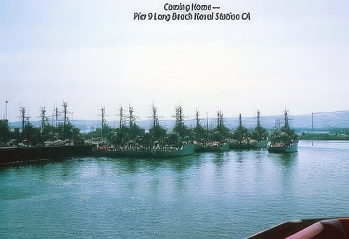
USS INFLICT (MSO-456) Wes Pac Cruise May thru Nov 1960
HIGHLIGHTS
By Floyd Farrar, Electrician’s Mate 2/c Feb 59 thru Aug 62
The whole crew and I looked forward to the trip over to the western Pacific with great anticipation. The old sea dogs that had made the trip before wanted to show youngsters how great the hospitality was with the Asian females. They wanted to show us how great the large bottles of Asahi beer tasted, oh ya, the food was mentioned too. Things like raw fish, soy sauce, tempura, fried rice, sushi, and such weren’t household words as they are today. I had only heard about these things from my uncle and my dad. I was eager to see the sights I had only dreamt about, glancing in books at the library and school. There weren’t any VCRs or travel tapes as there are now. We kids just had to use our imaginations.
I was a product of the 1950’s culture of Eisenhower, ’57 Chevy Bel-Airs, poodle skirts, Elvis Presley, hula-hoops, Sputnik, black and white TV, Lucy, Lassie, and Leave It To Beaver. You always got married before any ‘hanky panky’ with the girls, or at least that is what society wanted us to believe? My oh my, how times have changed.
Anyhow, we young hormone-enriched males were looking forward to meeting and making friends with girls who were raised differently than our puritan culture. And of course, by the sea-stories of others made it all that more exciting. So as the day approached, even all hands working parties loading stores for the long trip brought no gripes or bitches as they usually did when it was just local operations. Needless to say, our libidos and tongues were hanging out waiting.
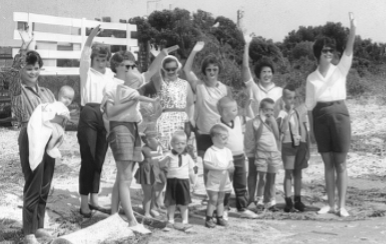
We left Pier 9, Long Beach Naval Station early on that May 3 amidst the Navy base band playing and dependent wives sobbing, “How will we survive on the small allotment you left us each month? Some dependents were smiling and saying, “Now I can have some real fun and see what he’s been doing at George’s Round-Up Country and Western bar across from Navy housing. The bartenders would say to us, “Where’s the money for your tab”? Bill collectors wanted last month’s car payment, and the young girlfriends were saying something about missing their last “period,” etc.
I remember one old-timer who had been on a few of these cruises saying, Now’s the time to leave our dependents and return home to our loved ones. I must explain that to this young sailor, an old-timer was anyone with more than one hitch under his belt or at least one WESTPAC deployment. The mythical status remained for World War II vets still on active duty. We had quite a few, and they entertained us with sea stories.
One time with our little division of five sweeps plus an LSD (Landing Ship-Dock), we were tasked with taking an M.D. headed for Pearl Harbor, cruising at a speed of 9.5 knots or around 10, if we pushed it. A squadron of destroyers or fast Greyhounds, as my friend Jim Dudash, called them left after we did and passed us just before Catalina Island. They gave us a toot on the whistle, and dipping of the colors was exchanged.
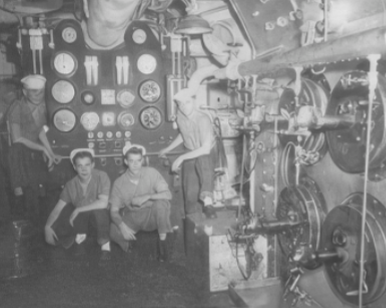
Jim was a Third Class Boiler Tender and the only one we rated onboard our diesel ship. He had transferred to sweeps from the steam turbine-powered Navy. He missed the firerooms of the tin cans terribly. We had only two very small first fire tube boilers that made hot water for cleaning and cooking. So when they ran well, Jim was detailed to help as best he could in the engine rooms and help the deck force stream gear. Everyone, I might add, got into that act. He would tell us tales of hot firerooms, express boilers, secondary superheaters, and forced draft fans, including separately fired superheaters, burner tips, fuel oil, blowing soot, feed pumps, and other exotic stuff not on an MSO.
I listened intently as if I knew what he was talking about, but it just didn’t register on my young brain at the time. It would be many years in the future as I went to work operating utility boilers, turbines, and generators for Southern California Edison, doing the very thing Jim talked so lovingly about. I stood on the fantail with him and watched the water boil up clear to the fantail railings of those tin-cans as they passed. Wow, were they fast.
Jim and I became fast friends, and he was to be involved in many escapades with me during my stay on that ship. We would become Long Beach Pike commandos hustling bar shuffleboard everywhere from the Checkerboard on the Pike to Bill Leader’s Place on Hotel Street, Honolulu. We could always manage to play and act like Paul Newman in the movie The Hustler. There were no bar pool tables then, just long, slick shuffleboards. We never got our fingers broken, but we learned to drink our beer fast and know where the back door of the place was and where it led to when needed, and occasionally it was used.
I should do an entire article about some of those 48s, 72s, and leaves we went on. One that does come to mind was an impromptu hitchhiking trip across the country in December, with only an AWOL bag, shaving kit, pea coat, and a jug of the good stuff to keep us warm. It was a trip to New Orleans to visit a shipmate on leave. This was done on a whim and a just wee bit of the barley for sound decision-making. We went there because we initially had set out for Phoenix, Arizona, to visit Jim’s relatives. A college student from LSU stopped and picked us up in Banning Pass near Palm Springs said he was going all the way to New Orleans. We looked at each other and said, what the hell after seven months on a Westpac? We were on leave, and it seemed like a good idea at the time. Besides, we could visit old Raleigh Grant, who had just left the ship, also on leave, to visit his folks down there.
What a time we had on that trip! We spent New Year’s Eve in Nuevo Laredo, Mexico, across from El Paso, watching a Bullfight and rooting for the bull. I couldn’t believe Texas was that large. Remember, there was no Interstate 10 in those days. Uvalde, Del Rio, and all the little towns along the way were mere eye-blinks, a bend in the road, and then gone. We’d see a sign for a town down the road, get all hyped up about seeing it, and just as fast it would be there and gone! We traveled through southern Texas and Louisiana.
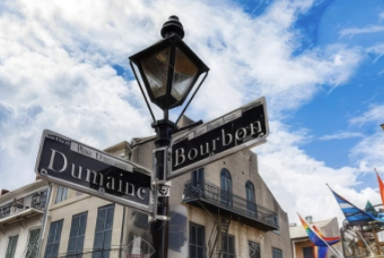
I found out where TABASCO came from, and we smelled it from Avery Island near New Iberia. I found out that you had better respect the Cajun culture or else. They didn’t take kindly to arrogant sailors who might be looking at their women the wrong way. They didn’t like losing at shuffleboard either! So as you can see, this fella told us to kind of tiptoe thru their territory. He told us they had a reputation for wielding very sharp fishing knives.
So, we eventually found Raleigh and managed to stay with him at his folk’s house. We toured the area around the Big Easy and found the streetcar named Desire after having a few toddies in the French Quarter. He showed us how to hunt red tree squirrels with shotguns in Picayune, Mississippi. I was introduced to a mess of fish; hush puppies, red squirrel meat, Cajun cooking, and even real Cajun Frenchmen and women. That was an experience for a young westerner from the foothills around Los Angeles. I found out back there I had the vocal accent, not them.
After these good times, Jim and I managed to catch a ride out of NAS New Orleans bound for March Air Force Base in Riverside on an old C119 Flying Boxcar. Air Force Reservists out on a weekend jaunt operated it. “I.T.” was funny as I would stand in the back of the thing and watch the cars down below going faster than the plane! It did, however, beat the hell out of standing by the side of the road in your sailor uniform hitchhiking. We tired of this rapidly, so when we landed for fuel in El Paso that evening, Jim and I thanked them and departed the aircraft, fully confident we would beat them to Arizona. We continued to hitchhike outside the town and astoundingly got a ride with a trucker almost straight through to south Phoenix, where we had initially started. Of course, Jim’s relatives said we were a little late.
Anyway, we didn’t see that destroyer squadron till weeks later in Yokosuka, Japan. While listening to a very pretty girl tries to sing Broken Hearted Melody without pronouncing the L and substituting R in its place, they ragged on us for being so slow. It took us about ten days just to get to Hawaii, all the time hand-cranking diesel fuel out of each fifty-odd 55-gallon drums on the fantail into the main fuel tank so we could make it. I know how to do that very well, as I was volunteered to empty a few of the drums! The brass said we might need a real doctor on such long hauls just for safety. We only rated a 1st Class Hospital Corpsman on board. Unlike the T.V. stories of the day about wartime, he couldn’t perform emergency surgery during a crisis.
As we called him, Doc was good at hangover cures, APC tablets, cuts, bruises, strains, sprains, penicillin pills, and surgical soap to wash with after a night with ladies of questionable virtue and the like. His shack was no MASH unit. Cutting wasn’t his game, although when we pissed him off, he threatened to do that, usually to our genitals. They didn’t have long-range choppers then who could or would rescue you and take you for medical treatment while 1500 miles in Mid-Pacific. Therefore, they put a doctor on board the LSD “USS Carter Hall. They were going to Subic Bay by way of Japan, so it was gratifying to have them along in case anything went wrong with one of our little ships or the crew.
Gosh, it was as slow or slower than us and rode the seas much worse, or so it looked like from our vantage point. I later talked to some of their crew at the E.M. club; they thought it was the other way around. We stayed over one weekend in Pearl to rest and refuel, just in time for the celebration of Hawaii’s admission to the union for statehood.
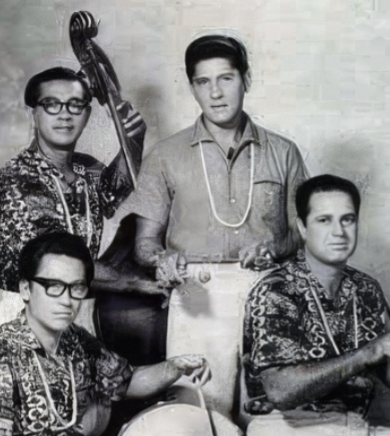
I didn’t realize until much later how significant these days were for the Hawaiians. No, I didn’t get or keep a newspaper from that era. Also, I would like to mention Don Ho was not performing there then as he is perpetually now, although he might have started around that time. My wife and I saw him over there a few years ago, and he looked much older than me. I did, however, find a picture of Arthur Lyman at Don The Beachcomber’s in Waikiki Beach amongst my service memorabilia. He autographed it over a small copy of his hit music of the day, Quiet Village.
I remember the bar, small tables with small lights, full of large drinks in Coconuts with little umbrellas and one in a Pineapple. We left there to explore the wilds of Waikiki Beach, and the pink Ala Moana Hotel was the largest one there then. We were informed by the old-timers to be careful and not to get into trouble as the HASP or (Hawaiian Armed Services Police) didn’t mess around with unruly sailors. We behaved ourselves as most of us wanted to get to WesPac. Liberty in Japan, Korea, Hong Kong, Taiwan, etc., and cohabiting with the Asian girls appealed to us more than a cold brig in Hawaii.
Then, as Willie Nelson put it years later, it was on the road again, four days to Midway Island and once again to refuel. We were informed there would be only four hours or so to chase gooney birds and see the tallest point on the Island (a mound of sand the Seabees pushed up with bulldozers), then back to sea again. This was the first time I remember experiencing almost getting sick walking down the pier. I knew about sea legs, but this was the phenomenon of not having land legs or a long time at sea and not being used to dry land. Of course, we first visited the E.M. Club for beer and sea stories. I had used all the film in my camera and didn’t take pictures of Midway, and I still regret this.
The story of our return to the ship from the Club was one right out of the movie, Mr. Roberts. The Seabees and Marines just piled us into the back of a pickup truck. When we arrived on the wooden pier, they had just dropped the tailgate; we fell and rolled out onto the dock. This all happened right in front of our gangway. The young officer of the deck was horrified to see his entire special sea and anchor detail, fairly well full of beer and good cheer, but not in the best shape to get our ship underway.
We did do it, though, and to this day, I don’t know-how. I was very fortunate to be in the pilothouse on sea detail and got to see the whole harbor at Midway, quite a tricky entrance and exit, I might add, which explains the pained expression on the O.D.’s face when we returned. Why a qualified “A” School graduate Electrician was in the pilothouse is the result of a little Captain’s Mast before leaving Long Beach. It will remain in the past where it’s best left to gather dust. It had to do with I.D. cards that were tampered with to say we were over 21 years of age, Nuff said
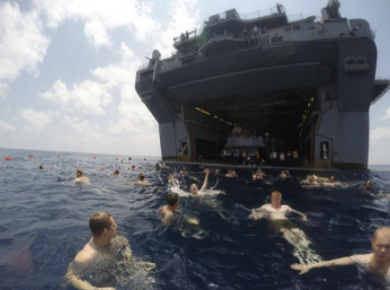
It was another ten days to Yokosuka, Japan, to be attached to the 7th Fleet, but our division operated independently. Only stopping in mid-Pacific on a bright sunny Sunday morning, in a glassy calm sea, and having a swim call interrupted this trip. I remember the water was very warm and clear blue. The only thing that bothered me was I figured it was about 1600 fathoms down, and I knew that I couldn’t “touch bottom.” I confirmed this from the Quartermaster, who showed me the chart. I had swum many times before in the Pacific at Santa Monica, Redondo, Long Beach, and Seal Beach as a kid, and always when riding the breakers, we could feel the sand under our feet. This was an altogether different feeling.
The other notable thing was the crewmembers up on the 01 deck with the M-1s on shark guard. Now, remember the book Jaws was many years in the future. However, I had just finished reading an account of the sinking of the USS Indianapolis, and the accounts of the shark attacks on the guys in the water were still vivid in my mind. Oh well, it was warm, refreshing, and very unusual for a young beach rat like me.
We arrived in Yokosuka at a very busy, thriving Naval Base. We were berthed near a British carrier; I think it was the Invincible or something like that. It was, in turn, berthed next to the carrier USS Oriskany. I spotted the division of destroyers that passed us so quickly around Catalina Island over a month earlier. I was an Electrician’s Mate and about the only one who had been to Motion Picture Operator’s school in San Diego. The motion picture exchange would only check out movies to card-carrying motion picture operators’ school graduates.
Our skipper liked movies, especially cowboy flicks. Guess who left the ship first with movies to exchange? I also had a navy driver’s license, so I had a pickup to drive. At first, it was hard to learn to drive on the wrong side of the road, but hey, the old man wanted me first in line for flicks! You see, at the MPX’s, it was first come, first served. Now, these weren’t the VCR/DVD stuff of today. They were very weighty, usually three reels of 16MM film in a heavy plastic case. We had to go through stacks of typed dog-eared Rolodex cards to see what was available.
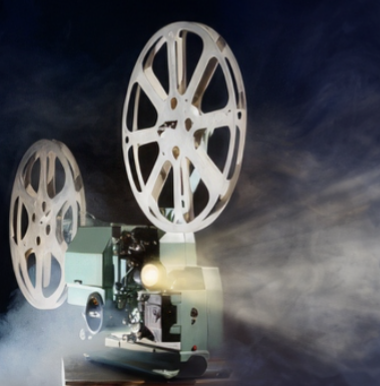
Then you had to check them out, rewind by hand all 1200 feet of each reel, and check the condition of the films, no tears, scratches, bad sprocket holes, etc. I might add that all this was very time-consuming, including jostling for room at the scarce rewind tables. If you didn’t take that time and someone else found a break, tear in the film, or missing reels, our ship’s budget would be charged for this problem. It was my responsibility, and I put my fanny on the line each time I signed my name. So I always checked the film condition, no matter how long it took.
(One more life lesson learned in the Navy.) If things went wrong, your ass would be severely chewed on by the Chief and the Skipper. Not to mention when you were showing the movie on the fantail or mess decks, the crew would let you know in a hurry if there was a break, tear, or if there was a missing reel. You were required to fix the problem and return to showing the movie fast. The stomping of feet, catcalls, and howls of displeasure was enough to unnerve even the cockiest of nineteen-year-olds like me. After all, I lived and worked with these guys every day.
Some of my best and crazier experiences were bargaining for and exchanging movies with other ships. We would get the radiomen involved, including the signalman with the flashing signal lights on the Wing Bridge, carbon arc searchlight, and even using the semaphore flags. I made the early evening and late-night visits to other sweeps, destroyers, and even the carrier Ranger and heavy cruiser Helena. There were times the skipper even had the whaleboat lowered just to exchange movies with other ships after finding out what they had.
You had to have a young and healthy frame to climb that Jacob’s ladder and holding the heavy movie cases. I had to be careful with those visits, as I had by now forgotten much of my boot camp training on naval etiquette. When you go from a ship of only 50 people to ones that include Marine guards, you remember to salute and other things like that. Usually, though, seeing my Electrician rate on my sleeve helped, of course, the ship patch saying INFLICT didn’t mean much to them. Yes transfers, included getting into undress blues while everyone else remained in dungarees. They did see that I was carrying movies, and I was usually welcomed with open arms.
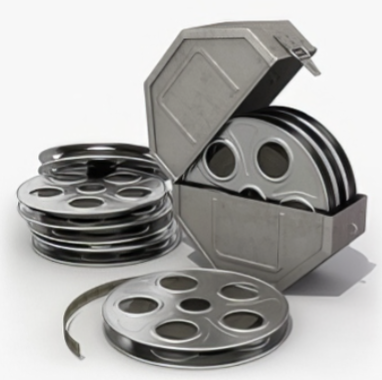
I got lost more than once on a heavy cruiser, especially the Forestall class carriers. The destroyers, APAs, AKAs, ARs, ADs, LSDs weren’t too bad, I usually could find my way up to the main deck, but those carriers, wow, you needed an Auto Club map just to find the mess deck! Long ago, I had forgotten my boot camp training on what the numbers and letters meant on compartment locations of Navy ships. I had to go to the Electricians shack to transfer the paperwork usually; it usually was buried deep below decks, which were an adventure in itself. Thankfully one of the messengers would stick with me and direct me back to the gangway and back to my little home with my prize of new movies. When I arrived back at the ship, I was quite popular for a while. It was then I learned that you couldn’t please all the people all the time. I had quite a feeling of power selecting movies for others. They never quite learned that I could select only what was available. Nevertheless, it was still fun, and I learned many life lessons from that experience. Even today, my wife kinda lets me select the movies for home at the video store.
We went through the tail end of a typhoon going from Sasebo to Taiwan. That was where only about ten of us weren’t seasick, and we had to operate the ship. The Skipper and Exec plus the Chiefs and only a few others weren’t green or otherwise out of it. That was an experience I can never forget. The creaking and groaning of the ship plus the guys being sick, then everything not tied down flying around. I just took it as quite an adventure, and of course, kept my kapok life jacket handy. The old Gunner’s Mate and the old Boatswains Mates didn’t seem too worried, so I figured if they weren’t scared, I wouldn’t be either. They took great pleasure telling us how it had been much worse on board some other ship in another storm. I did find great fascination watching the clinometer in the pilothouse when on helm watch. I didn’t believe that ship could lean so far over and not get water down the engine room stack!
Now eating was another story; nothing would stay on the grill to be cooked; it just flew around too much. The Commissaryman just gave us non-sickies the keys to the galley, and we just fended for ourselves. It was mostly cold cuts, bread, butter, mayo, cheese, salami, and such. Nothing we tried to cook stayed in the steam kettles or on the grill. I remember helping my friend Ed Jaska who had the unfortunate job of mess cooking while on that trip. The condiments on the mess tables wouldn’t stay in place, so we tried to anchor them down with wet paper or rags so they wouldn’t slip. It was no use, and we wound up with a mixture of salt, pepper, sugar, and catsup all over the bulkheads in the mess decks.
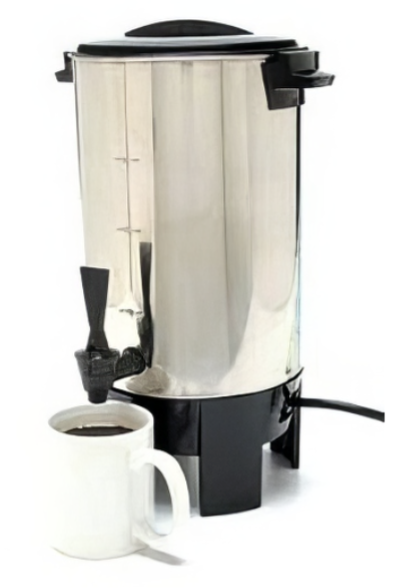
Those of us who could eat would use one hand to hold down our steel trays when we went up and the other one for chow. The side-to-side movements were tricky, but the wet paper or rags helped. No, we didn’t starve; in fact, the only problem was coffee. The big urn in the mess deck was overflowing, so we had to make only half the normal amount, which pissed off the Chiefs and the Boatswains, but somehow through it all, there was coffee.
One coffee incident comes to mind during this rough trip down the Formosa Straits. We were rocking and rolling heavily. Somehow the mess decks master at arms got it into his head that the only coffee urn on the mess deck needed cleaning! Where this idea came from is still a mystery. However, most sailors know that the deck force, especially Boatswains, had an almost religious experience when it came to coffee.
I helped Ed dismantle the damn thing as I had just gotten off the three-month mandatory mess deck duty and remembered how it was done. He was an Electrician’s Mate striker, so he was attached to our gang. I was off watch, and besides, our Chief said to help him. It was common in those days for non-rated people on board to work one-month berthing compartment cleaning, one month on the mess deck and galley, and one month in the wonderful hot, humid, and very small scullery washing the pots, pans, and tin trays.
Before leaving homeport, I had just made Third Class, but it didn’t matter as rate usually only meant your specialty. Everyone worked on sweeps, and a higher rate only meant you were paid a little more. Anyway, things were so rough; no ship’s work could be done, so we just concentrated on standing watches, fixing anything that broke, and just trying not to get sick.
Ed was having a very stressful time of it, as he was the only one not sick up on the mess deck. We all pitched in and helped with the chow, as it was the only way we would get fed. So here comes this request, no it was more like an order from the Master at Arms to clean the coffeepot. As usual, Ed said, hey, you’ve got to be kidding or words to that effect. I said, come on, well, get it done quickly and over with so we can get back to surviving. We dismantled the damn thing when it was cool, piled up the parts where they wouldn’t hit us flying around. I produced a soapy rag, stood on an old wooden box, and proceeded to clean the interior of the large urn. It didn’t fly around because the shipbuilders thought it might be better anchored down. I held on with one hand and used the other to clean with.
You remember the old sailor’s adage from sailing ships, “One hand for the ship and one for yourself.” This was very true onboard sweeps when in rough seas. During the cleaning process, something happened in the forward engine room requiring my presence, and I told Ed I’d be back shortly. Well, it never happened. I returned later, and the coffeepot was back together, looking clean and sparkling. Ed said he’d finished it alone.

That evening the Master at Arms crowed about how great the coffee tasted, I didn’t see much difference, but you respected heavily tattooed much hash marked old Boatswain’s Mates. They could, at times, make life unpleasant for you. Anyway, sometime later, he decided to make coffee, as Ed was busy, as were everyone else. We heard a growl clear down to the engine room as he found the rag Id been using still there in the pot. Ed had apparently forgotten to check the interior after I’d left. Now I must say the brew didn’t taste all that bad. Fortunately, he must have flushed out the urn, as we didn’t get the runs from drinking a soapy coffee mixture. It was, however, the talk of the mess deck for quite a while. Even the Skipper and Exec got quite a chuckle out of that one.
One of the highlights of that trip was a visit to Corregidor Island in the Philippines. The Captain and Executive Officers of the ship were ‘Mustangs’ and vividly remembered WWII. I found out later they had to get special permission to visit the Island. We finished up training with the Philippine Navy in and around Bataan early in the day. The swell from the South China Sea was coming at an angle that would have damaged the ship if we came in alongside and tried to tie up. We had to anchor out and take the motor whaleboat into a very shaky wooden pier.
I wasn’t supposed to go, but I called in a favor and got assigned to the whaleboat as Boat Engineer. Maneuvering the boat into and tying up to that pier, then climbing a very rickety ladder amid the swells, was an adventure unto itself. Our sister ship Loyalty was the only other sweep with us. The other ships elected to go on to Cavite Naval Station for the night, where it was calmer. Our Skipper and the Skipper of the Loyalty wanted to see the Island, and a little swell wasn’t going to stop them. I had seen plenty of what had happened. They’re watching Victory at Sea, Crusade in the Pacific, and The March of Time on our small screen black and white T.V. Then reading history books and listening to my dad and uncles talk about the war. This was quite a moving and exciting experience for a lad of only twenty.
The Philippine Army had jurisdiction of the Island then to keep the crafty and daring scrap hunters at bay. Fortunately, we didn’t have to walk as they loaned us a few trucks and jeeps. There were quite a lot of unexploded ordinances around so that we couldn’t explore. We had to keep to the roads and established trails. We did see much of what was left, the tunnels, the tracks leading into them, old gun emplacements, etc. The old coast defense guns were still there, pointed out to the South China Sea for an invasion that never came from that way. The old 14-inch projectiles were still there rusting in the sun in a ready rack on the wall near the gun. We tried to move one and found out how heavy they were! We visited Geary Battery; it was two or three heavy mortar-type guns. It was noted on a sign that it was the only effective counter-battery fire directed at Bataan after it fell.
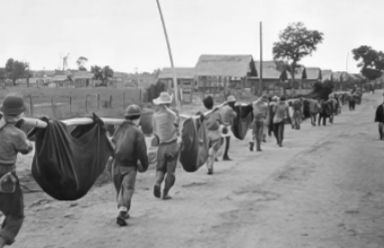
There were pockmarks everywhere and bullet holes all over. It was very quiet, and the jungle had started to take over, but you could still see with your mind’s eye what had taken place here in the spring of 1942. There were rusted bullets, shrapnel, canteens, helmets, and the like lying around. We were explicitly told not to pick up anything or bring anything back to the ship. We visited the parade grounds where old Dugout Doug, as my father referred him to, viewed the troops. His picture was there in pre-war photos. There was everyone spiffy clean for inspection.
After the December 7 losses, this whole area was abandoned, and they moved into the tunnels. Mainly because it was on the high ground, and you could see Bataan and the entire Manila Bay. It also made very inviting target artillery when the Japanese captured Bataan, not to mention aircraft bombing and strafing. We could see the reinforced concrete buildings that were partially destroyed, and you could see where there had been direct hits on one in particular.
It had been the three-story base hospital. One hit had gone directly through all floors. I asked why the buildings were so heavily constructed before the war; the explanation was typhoon protection. We spent the better part of an entire afternoon exploring the Island. Always under the watchful eye of our Officers and the Philippine army too. They said even in those days with the unexploded ordinance and the like, scrap hunters were stripping the place, and nothing would be left for history in no time. Now, remember this was the late summer of 1960. I don’t have any idea what has happened since.
The thing I regret is that I wasn’t prepared that day and didn’t have any film for my camera. Ship stores where you could purchase these things were non-existent on smaller craft. We weren’t supposed to visit the Island, or I could have been ready.
We completed this cruise or deployment as it’s now called, in about six months after operating with various allied Navies and “goodwill” visits. I remember on the way home reading on the Mess Deck bulletin board that Kennedy had been elected President in a squeaker over Nixon. It was from our mimeograph machine, remember them? The anticipation of our return was heightened as we rounded Catalina Island and had to wait all night in the channel to come in so we could be with the same Destroyer Squadron who passed us in the first place going out over six months ago!
We returned to Long Beach just in time for Thanksgiving and much-needed shore leave.
After all, other adventures and exploits awaited Jim and me, they were now known in Phoenix, and of course, the Long Beach Pike had other pigeons to fleece at the bar shuffleboards. Oh ya, we still had a few years to go to finish out our hitch in the Navy.
Addendum: My old friend Jim Dudash stayed in the Navy for full twenty-five years and retired a Chief Boiler Tender. He lived with his wife of over twenty-five years, Carol, in Webb City, MO (near Joplin). We stayed in touch often and visited a few times. He eventually passed away in early 2008 from complications of cancer due to asbestos, probably too many years in engine rooms, and being around steam pipe lagging. I also regret to inform all that my very old and close shipmate and friend Larry Fugh also passed away in 2014.
What professional achievements are you most proud of from your military career?
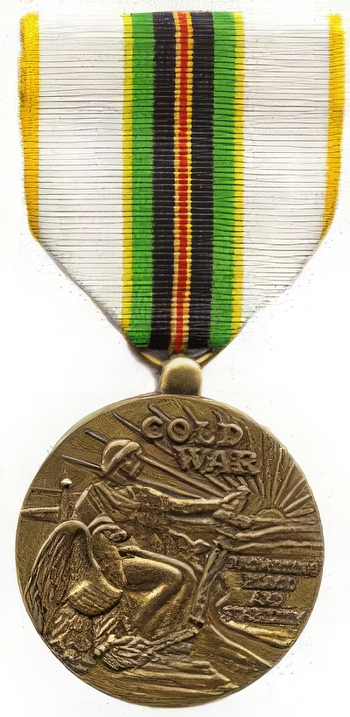
I am proud of just being able to serve when I was needed in the Cold War era. Medals and awards were scarce then.
Of all the medals, awards, formal presentations and qualification badges you received, or other memorabilia, which one is the most meaningful to you and why?
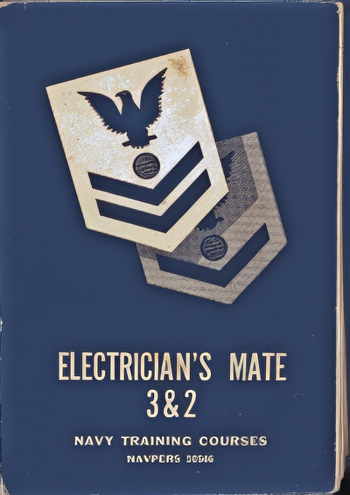
Making rate of 3rd Class Electrician’s Mate. I received the Cold War Service Medal.
Which individual(s) from your time in the military stand out as having the most positive impact on you and why?
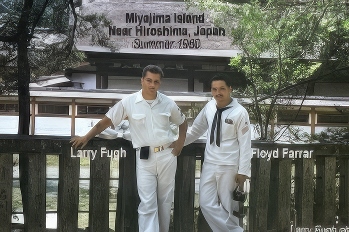
One of my best friends from the era was Larry Fugh, Electrician’s Mate 2nd, and my mentor. Larry took me under his wing and made me learn the trade so I wouldn’t put a burden on the others in my gang. Then one of my other best friends, Jimmy J. Dudash, BT3. Jim and I did everything on liberty. We were old Long Beach CA Pike Commandos.
List the names of old friends you served with, at which locations, and recount what you remember most about them. Indicate those you are already in touch with and those you would like to make contact with.
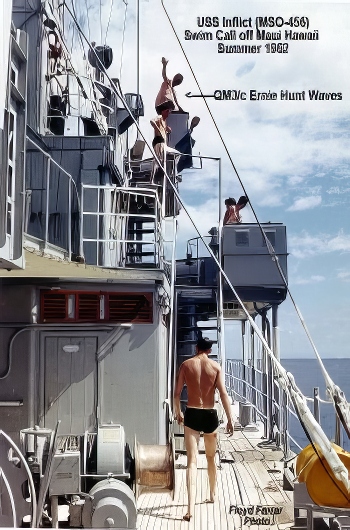
There were so many men; it is hard to remember all of them now. I stay in touch with Rich Tomassetti, who lives in Indiana now. Another is Norv Azevedo, our E.T., who lives outside of Reno, NV. And Ernie Hunt, our Q.M. who lives in Suisun Bay San Francisco. Then there is Ron Grant, one of the E.M. gang with me, and he lives in Sumrall, Mississippi, near the Gulf Coast. There is also another EM, Gene Hair, who lives in Plano, TX.
It took me a LONG time before computers to track down even a small number of guys I served with. I had an address book of all their addresses and telephones as I was gonna stay in touch after I was discharged. I inadvertently took it with me to the Long Beach Pike the night before I was to be discharged, and I lost it somewhere over there. I must say computers have made reconnecting with others MUCH easier.
Can you recount a particular incident from your service which may or may not have been funny at the time but still makes you laugh?
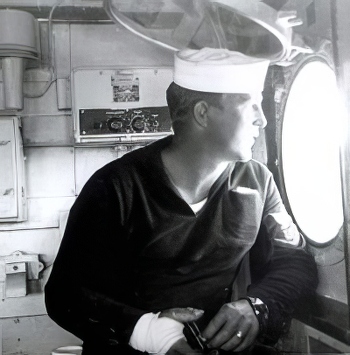
When I was mess cooking, one of my jobs was to make coffee for the continual never-ending coffee pot on the crew mess deck. As I was cleaning it one day, I was interrupted for some reason. The slightly soapy cleaning rag I left in the bottom of the HUGE pot. When I returned, a Boatswain’s Mate was making coffee and chewing my ass out for NOT having hot ‘joe.’
I started to tell him about the rag, and I figured it was NOT the time for that now, as his demeanor was not on the wonderful side. He took a huge sip and said it was like he ALWAYS liked it STRONG and MEATY! Sometime later, I was again busy doing dishes, etc. The OTHER Mess Cook somehow found the rag as it was clogging up the spigot and managed to tell the B.M. who had made the coffee initially. It was tough to keep out of his way for a few days. PISSED OFF was not the half of it. But I survived to laugh about it many times across the Pacific to Japan, and that old grizzled Boatswain even bought me a few drinks in the Yokosuka EM Club.
Note this photo is that same Boatswain’s Mate. I think his name was Honea.
What profession did you follow after your military service, and what are you doing now? If you are currently serving, what is your present occupational specialty?
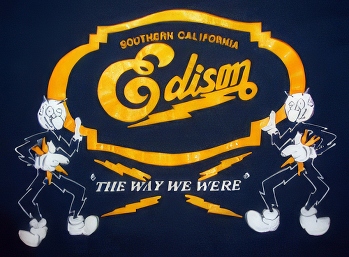
I was employed by So CA Edison for 34 years as an operator at steam Power Plants, doing basically what I did in diesel engine rooms in the Navy. I was fortunate enough to retire in October of 1996 and have been enjoying retirement ever since. I now live near Los Alamitos, CA, just north of the Seal Beach Naval Weapons Depot.
What military associations are you a member of, if any? What specific benefits do you derive from your memberships?

I am a member of the Navy MSO Association and keep in touch with a LOT of old MSO sailors that way, including a lot from my old ship. We hold reunions every few years as long as we are able to attend.
In what ways has serving in the military influenced the way you have approached your life and your career? What do you miss most about your time in the service?

It taught me to live and let live with difficult people AND to rely on people to have your back and depend on them being there in “TIGHT” situations.
Based on your own experiences, what advice would you give to those who have recently joined the Navy?

Keep yourself busy, learn what you can, and stop blaming all around you for YOUR shortcomings. And above all, TRUST your shipmates as you will have to rely on them at sea. There is NO dialing 911 on the high seas! You have to be able to fix ANY problem, or you will be in SERIOUS trouble!
In what ways has togetherweserved.com helped you remember your military service and the friends you served with.

It has made me reflect on many things I had not thought of in a LONG time. I am very glad I did this, even though it was long and quite time-consuming.
PRESERVE YOUR OWN SERVICE MEMORIES!
Boot Camp, Units, Combat Operations
Join Togetherweserved.com to Create a Legacy of Your Service
U.S. Marine Corps, U.S. Navy, U.S. Air Force, U.S. Army, U.S. Coast Guard
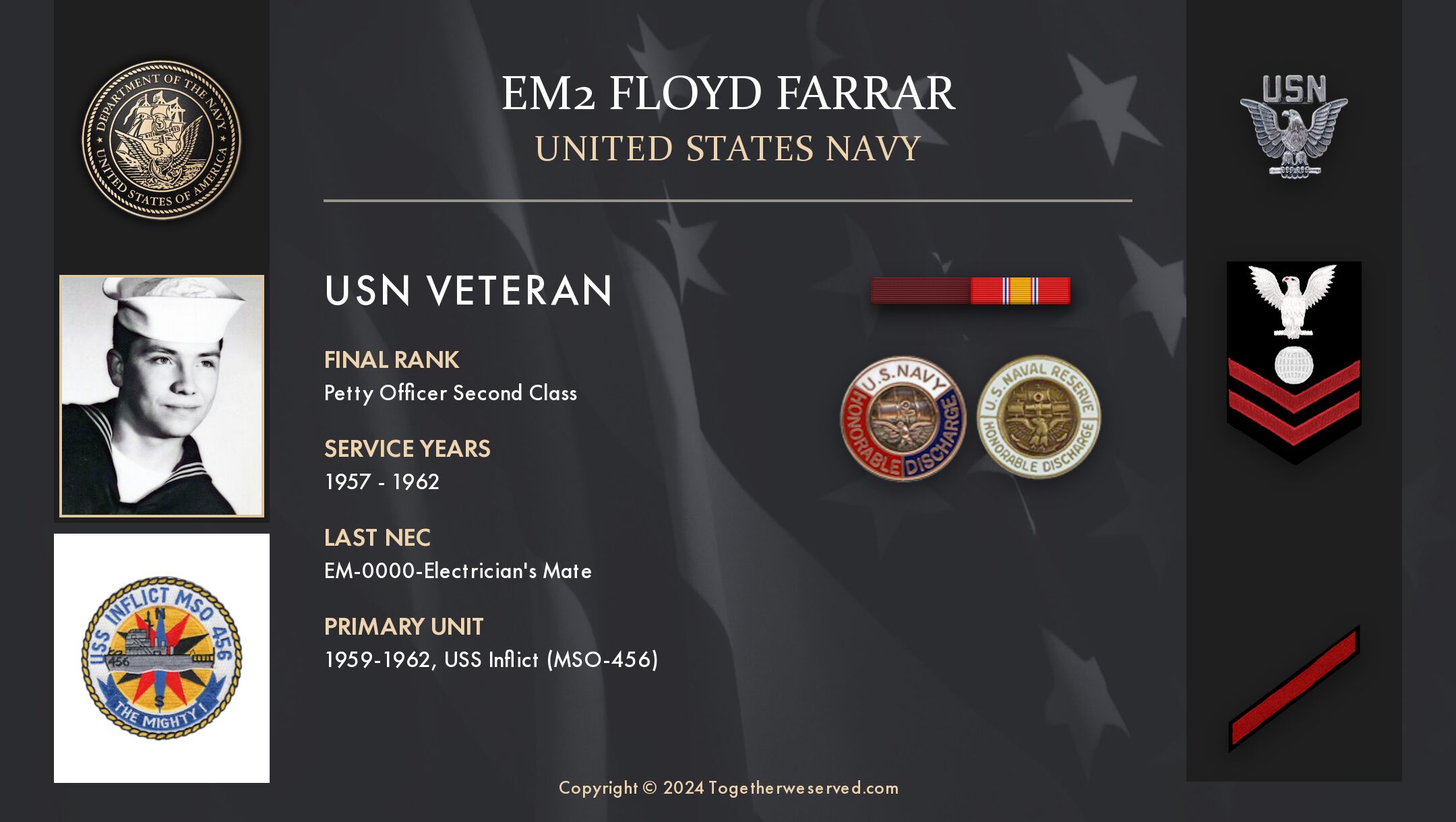
0 Comments